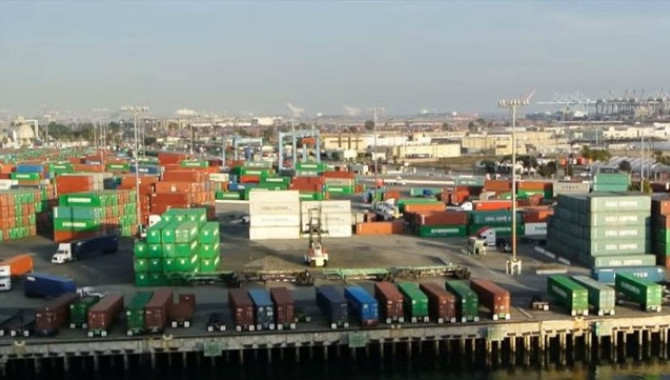
1 Shanghai
Yet again Shanghai claims the title for the world’s largest container ship port with 42M TEU – but its annual rate of growth has slowed, from 8.3% in 2017 to 4.4% this year. A major factor was slow domestic container growth. From January to November 2017, Shanghai’s domestic container trade jumped 16.7%, compared to only 3.4% in 2018. International trade growth was steady and this looks set to continue as the port continues to build up its links along the Yangtze River as part of its strategy to increase inland waterways traffic and Shanghai city’s 3-year (2018-20) action plan aims to further strengthen Shanghai’s status as an international shipping hub.
2 Singapore
Singapore remains in second place, with 36.6M TEU, up a solid 8.7%. PSA Singapore has boosted its use of big data and built partnerships with container shipping lines. It has formed a joint venture terminal with Ocean Network Express and CMA CGM’s Ze Box and PSA unboXed have signed a memorandum of understanding to work on digitalisation projects. Ze Box is CMA CGM’s corporate venture capital arm that invests in start-ups with innovations that bring strategic value to the CMA CGM Group, while PSA unboXed is PSA International’s external innovation and corporate venture capital arm.
3 Ningbo
Ningbo has jumped from fourth to third place, overtaking Shenzhen with volumes of 26.35M TEU, an increase of 7.1% compared to 2017. The port has won a clutch of new services and has boosted its rail network, driving up container volumes. It opened nine sea-rail links last year. It also joined the LNG Bunkering Port Focus Group in 2017. With LNG expected to be used by more container ships, Ningbo is in a good position to win more container volumes.
4 Shenzhen
Shenzhen has been pushed from third to fourth place after Ningbo jumped up one place. Its 25.7M TEU represents a year-on-year rise of only 2.1%. But it plans to grow its output by becoming a free trade port by the end of 2020, and also aims to cut customs clearance time for cargo by one-third by 2020, through streamlining procedures and lifting trade restrictions.
5 Guangzhou
Guangzhou’s main container port Nansha is one of China’s fastest-growing ports and has jumped from number seven to five. It registered a growth rate of 27.87M TEU in 2018, a rise of 7.4% compared to 2017. Nansha is boosting its fast growth through tapping into the Belt and Road initiative and growing its rail infrastructure. Nansha’s Europe chief executive Johannes Nanninga tells Container Shipping & Trade “Nansha was only opened in 2004 and in the last 10 years it has grown tremendously. We have added value by opening a free trade zone.” Nansha’s volumes comprise 65% of Guangzhou’s total volumes. It has capacity for 20M TEU and can also handle 20,000-TEU box ships.
6 Busan
Busan remains at number six, having achieved 21.66M TEU in 2018, up 5.7% compared to 2017. The port is focused on boosting its transhipment cargo volumes and is creating a worldwide business network to develop Busan Port into a global transhipment hub. It is also enhancing its efficiency by implementing CyberLogitec’s integrated terminal operating system, OPUS Terminal, to improve efficiency, productivity and response agility.
7 Hong Kong
Hong Kong slid into seventh place from fifth after suffering a cargo decline of 5.7%, down to 19.6M TEU. In January this year it announced its terminal operators will collaborate to boost the competitiveness of Hong Kong’s terminals. Four terminal operators entered into a Hong Kong Seaport Joint Operating Alliance Agreement. The co-operation is expected to create more capacity by increasing the flexibility in berth and yard planning by using a common terminal operating system. It is hoped this will boost the port’s volume this year.
8 Qingdao
The Bohai Bay port remains at number eight, with 19.32M TEU, up 5.5% compared to last year and a faster growth rate than the 1.6% increase it registered last year. The port intends to capitalise on China’s Belt and Road initiative. Qingdao Port International and COSCO Shipping Ports have established a joint venture – Ocean Bridge International Ports Management – to boost co-operation with the Belt and Road initiative. A statement says “The two sides will integrate project development and management to realise the complementary advantages, raise the level of the operation and management of the terminal and achieve win-win development, to integrate into the Belt and Road initiative.”
9 Los Angeles/Long Beach
Los Angeles and Long Beach – the largest ports in the US and known as the gateway to southern California – have seen their combined volumes grow by 3.9% to 17.55M TEU. Commenting on Long Beach’s volumes, Port of Long Beach executive director Mario Cordero says “We have had a good domestic economy in the last couple of years and the global economy is fairly good – when both economies are at a very good pace, that brings resiliency to the international trade.” Moving forward the US-China trade war is a source of concern for the ports, with Port of LA noting a growth in the import and export gap.
10 Tianjin
Tianjin has leapfrogged Dubai to reach number 10, with a jump of 6.2% to reach 16.01M TEU. Its priorities are developing its container business, strengthening efforts in route development, actively exploring new routes and enhancing their capacity, expanding transhipment capacity, and increasing the cargo volume of Bohai Rim feeder ships. It is also capitalising on China’s Belt and Road initiative.
11 Dubai
DP World’s Dubai complex has been knocked out of the top 10 by Chinese port Tianjin. The port saw its volumes fall by 2.7% in 2018, with volumes totalling 14.95M TEU. This is in contrast to 2017, when Dubai saw its volumes grow by 4% to reach 15.3M TEU. DP World has invested US$836M of capex in the EMEA region, focusing on capacity expansions at Dubai’s flagship Jebel Ali port, Jebel Ali Free Zone and London Gateway (UK).
12 Rotterdam
Port of Rotterdam achieved 14.5M TEU last year, up 5.7% compared to 2017. A major strategy for the port is boosting the productivity and efficiency of its container terminals’ operations with a strong digitalisation strategy, including using internet of things (IoT) technologies. It is collaborating with IBM on the IoT initiative.
13 Port Klang
Port Klang fared better than last year, when it dropped from 12th to 13th place and saw a 9% drop in container volumes. This year volumes rose by 2.8% to reach 12.3M TEU although it has remained at number 13. It lost out after CMA CGM acquired APL in 2016, which resulted in Ocean Alliance volumes transferring from Port Klang to Singapore. But the port has been growing steadily within intra-Asia trades.
14 Antwerp
Port of Antwerp had a strong year in 2018 – it saw a year-on-year 6.2% increase in its deepsea box volumes, hitting 11.1M TEU. Antwerp Port Authority director of international relations Luc Arnouts puts it down to the growth of ship size and the subsequent increase in demand for a “cargo generating” port. Another factor behind its larger volumes last year is winning two new services on the east-west tradelane where it is the first port of call.
15 Xiamen
Xiamen’s volumes hit 10.7M TEU, a jump of 3.1%. It has put in a solid performance over the last few years; in 2015, it was the fastest growing of the top 10 largest container ports in China, with volumes rising by 7.5% compared to 2014. It has been expanding over the past few years. In 2010, Xiamen Port incorporated the neighbouring port of Zhangzhou to form the largest port in China’s southeast region.
16 Kaohsiung
Taiwan’s flagship port, Kaohsiung has done an about-turn – its volumes rose 1.7% in 2018 to reach 10.45M TEU, in contrast to a 1.9% fall in cargo last year. its major focuses include building more deepwater ports as “effectively meeting the needs of the largest container ships will be key to Kaohsiung Port maintaining and expanding its role as an international transhipment centre.”
17 Dalian
Dalian has seen its growth rate slow – its volumes inched up by 0.6% to 9.77M TEU last year. As the US is its fourth-largest export market, it has been affected by the China-US trade war. According to reports, Dalian is now the go-between for Japanese and South Korean exports to Russia, eastern Europe and central Asia. In June, China Merchants Port Holdings raised its stake in Liaoning Port Group – which controls three ports including Dalian – to 51%, giving it majority control. This could boost performance levels.
18 Tanjung Pelepas
Malaysia’s largest port achieved 8.96M TEU in 2018, up a healthy 7% year-on-year. It competes with Singapore and Port Klang to be the transhipment hub for southeast Asia. Tanjung Pelepas is investing around US$2.1Bn under its latest plan to further improve the port’s capacity over the next five to 15 years.
19 Hamburg
Hamburg has dropped from 18th to 19th place after volumes fell by 1% to 8.77M TEU. However, while there has been a slight decline in transhipment volumes, there has still been growth in the port’s hinterland volumes – and it is this more lucrative growth Hamburg is targeting. Hapag-Lloyd and ONE moved four transatlantic liner services from Bremerhaven to Hamburg in January this year. This will increase volumes at the port by 55,000 TEU in 2019 compared to 2018. Other positive news is that Port of Hamburg has been given the green light to dredge the River Elbe.The River Elbe needs dredging to boost the movement of ULCSs through the port. This will be completed in 2021.
20 Laem Chabang
Laem Chabang saw its volumes rise by 3.7% to reach 8.07M TEU – slower than the 7.7% growth it achieved in 2017. Laem Chabang expanded its container operations last year when Hutchison Ports Thailand opened its US$600M terminal – its third at the port. The new terminal will help Thailand boost its transhipment traffic as the facility could pave the way for a 40% capacity increase in vessels calling at the port.
Source: Riviera
The opinions expressed herein are the author's and not necessarily those of The Xinde Marine News.
Please Contact Us at:
admin@xindemarine.com


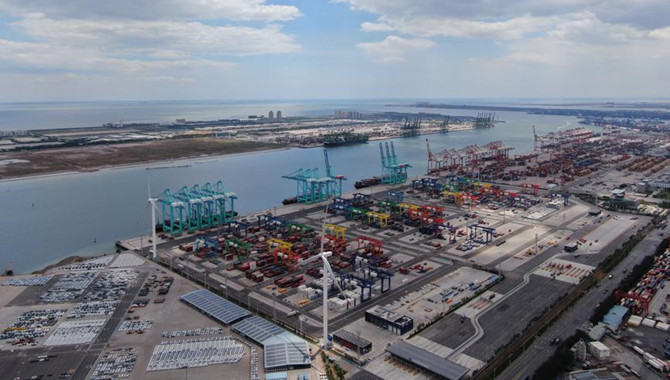 Tianjin Port container terminal goes high-tech
Tianjin Port container terminal goes high-tech 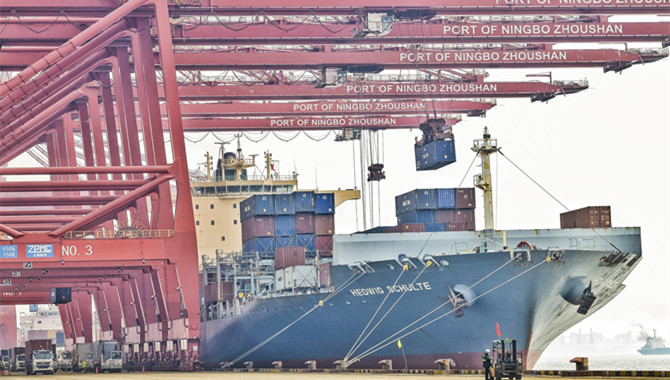 China's Zhoushan Port plays a booster for global tr
China's Zhoushan Port plays a booster for global tr 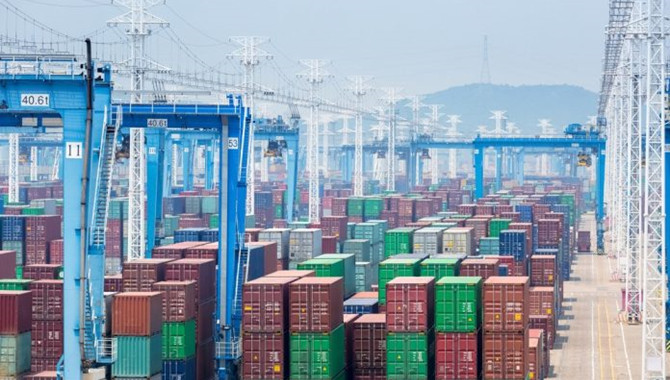 Ningbo Zhoushan hits 1 million TEU milestone in the
Ningbo Zhoushan hits 1 million TEU milestone in the 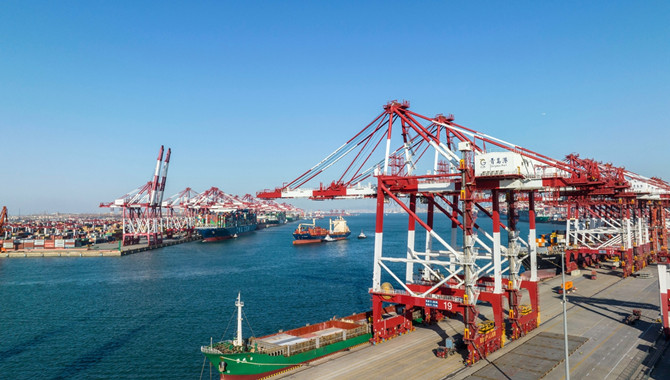 Shandong aims to build world-class ports cluster in
Shandong aims to build world-class ports cluster in 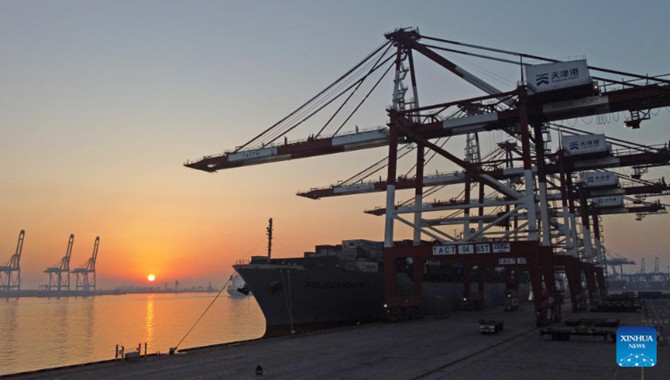 Tianjin Port sees container throughput expand 6.9%
Tianjin Port sees container throughput expand 6.9% 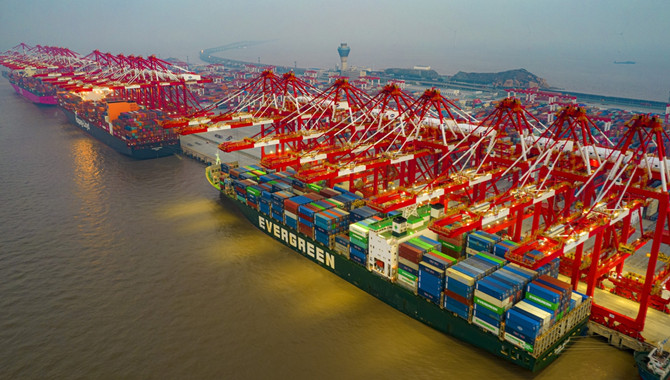 Sea ports renege quarantine, promote marine trade
Sea ports renege quarantine, promote marine trade